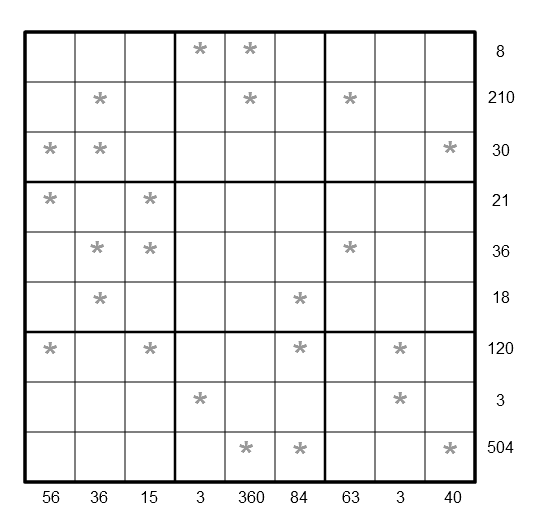Copyright © University of Cambridge. All rights reserved.
'LCM Sudoku II' printed from https://nrich.maths.org/
Show menu
By Henry Kwok

Rules of LCM Sudoku
Like the standard sudoku, this sudoku variant has the basic rule:
- Every row, every column and every $3\times 3$ box in the grids contains the digits $1$ through $9$.
The puzzle can be solved by finding the values of the unknown digits (all indicated by asterisks) in the squares of the $9\times 9$ grid. At the bottom and right side of the $9\times 9$ grid are numbers, each of which is the Least Common Multiple (LCM) of a column or row of unknown digits marked by asterisks.
Altogether $18$ Least Common Multiples of $9$ columns and $9$ rows of unknown digits are given as clues for solving the puzzle.
As an example, the LCM of $3$, $9$, $6$, $4$, $2$ and $1$ is $36$. In the puzzle, the LCM of the four unknown digits in the second column beginning from the left of the $9\times 9$ grid is $36$, while the LCM of the four unknown digits in the seventh row beginning from the top of the $9\times 9$ grid is $120$.
After finding the values of all the unknown digits, the puzzle is solved by the usual sudoku technique and strategy.